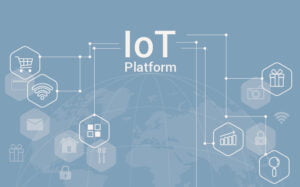Choosing the right open-source IoT platform is a critical decision in any IoT development journey. With a variety of platforms available—each offering different capabilities, flexibility, and scalability—this article compares several widely-used open source IoT platforms to help you decide which solution best fits your use case.
Why Open Source Matters in IoT
Open-source IoT platforms play a crucial role in accelerating innovation, reducing costs, and ensuring long-term flexibility in IoT development. By choosing an open-source IoT platform, developers gain full access to the source code, enabling deep customization and integration across diverse hardware and software environments.
Unlike proprietary systems, open-source solutions foster transparency and community collaboration. This means bugs are identified and resolved faster, new features are proposed and adopted quickly, and security issues are openly addressed. For projects that demand scalable device management, protocol interoperability, and control over infrastructure, open source offers a robust foundation.
Moreover, many open-source platforms support widely adopted standards like MQTT, CoAP, and HTTP, making them ideal for cross-platform IoT ecosystems. Whether you're building for smart cities, industrial automation, or connected healthcare, open-source platforms ensure you're not locked into a single vendor or technology stack.
Top Open-Source IoT Platforms Overview (Ranked by GitHub Stars)
1. ThingsBoard
Overview:
- Website: ThingsBoard Official Site
- GitHub: ThingsBoard GitHub
ThingsBoard is a highly scalable and fault-tolerant IoT platform designed for data collection, processing, and visualization. It supports multiple protocols like MQTT, CoAP, and HTTP, making it versatile for various applications.
Key Features:
- Scalability and Fault Tolerance: Capable of handling millions of devices and messages.
- Customizable Dashboards: Interactive dashboards with customizable widgets.
- Rule Engine: Allows complex data processing and analytics with rule chains.
- Multi-Tenant Support: Suitable for service providers with multiple customers.
Open-Source vs. Enterprise Versions:
- Open-Source Version: Offers a full-featured platform with community support.
- Enterprise Version: Includes advanced features such as white-labeling, priority support, and additional integrations.
Technical Details:
- Programming Language: Java
- Database: PostgreSQL for relational data, Cassandra for scalable storage
- Time-Series Database: InfluxDB for time-series data
- Microservices: Supported via Docker
- Kubernetes: Supported for orchestration and scaling
Community and Support:
ThingsBoard boasts a large and active community, with extensive documentation and tutorials available online. The GitHub repository is actively maintained, with frequent updates and community contributions. The enterprise version offers additional professional support and advanced features tailored for large-scale deployments.
Use Cases:
- Industrial Automation: Monitor and control industrial processes, collect and analyze data from various sensors and devices. Learn more about Industrial IoT and Industry 4.0
- Smart Cities: Implement smart city solutions such as smart lighting, traffic management, and environmental monitoring.
- Environmental Monitoring: Deploy sensors to monitor air and water quality, and provide real-time data visualization and alerts.
2. Magistrala
Overview:
- Website: Magistrala Official Site
- GitHub: Magistrala GitHub
Magistrala is a modern, scalable, secure, and open-source IoT cloud platform written in Go. It supports multi-protocol connectivity and is designed for complex IoT solutions.
Key Features:
- Multi-Protocol Connectivity: Supports HTTP, MQTT, WebSocket, and CoAP.
- Device Management: Includes provisioning and mutual TLS authentication.
- Message Persistence: Integrates with Cassandra, InfluxDB, MongoDB, and PostgreSQL.
- Deployment: Supports Docker and Kubernetes for container-based deployments.
Open-Source vs. Enterprise Versions:
- Open-Source Version: Comprehensive feature set with community support.
- Enterprise Version: Adds advanced security features, enhanced scalability, and enterprise-grade support.
Technical Details:
- Programming Language: Go
- Database: PostgreSQL, MongoDB, Cassandra for scalable storage
- Time-Series Database: InfluxDB
- Microservices: Designed with a microservices architecture
- Kubernetes: Fully supported for deployment and management
Community and Support:
Magistrala is backed by a growing community with detailed documentation and support available through forums and GitHub. The enterprise version includes additional features such as enhanced security and enterprise support, making it suitable for large-scale industrial applications.
Use Cases:
- Smart Agriculture: Monitor soil moisture, weather conditions, and crop health using IoT sensors, and automate irrigation systems.
- Energy Management: Optimize energy consumption in buildings and industrial facilities by monitoring and controlling HVAC systems, lighting, and machinery.
- Logistics and Supply Chain: Track and manage the movement of goods, monitor storage conditions, and optimize logistics operations.
3. Mainflux
Overview:
- Website: Mainflux Official Site
- GitHub: Mainflux GitHub
Mainflux is a modern, scalable, secure, and patent-free IoT cloud platform written in Go. It supports a variety of protocols and is ideal for industrial IoT, smart cities, and edge computing applications.
Key Features:
- Multi-Protocol Support: Includes HTTP, MQTT, WebSocket, and CoAP.
- Device Management: Features zero-touch provisioning and fine-grained access control.
- Security: Uses mutual TLS authentication with X.509 certificates.
- Persistence: Supports PostgreSQL, InfluxDB, Cassandra, and MongoDB.
Open-Source vs. Enterprise Versions:
- Open-Source Version: Fully functional with community-driven support.
- Enterprise Version: Provides additional enterprise-grade features and professional support services.
Technical Details:
- Programming Language: Go
- Database: PostgreSQL, MongoDB, Cassandra
- Time-Series Database: InfluxDB
- Microservices: Fully supported with Docker and Kubernetes
- Kubernetes: Supported for orchestration and scaling
Community and Support:
Mainflux has a robust community and is actively developed with frequent updates. Extensive documentation, tutorials, and community forums provide ample support for developers. The enterprise version offers additional features and support for large-scale deployments.
Use Cases:
- Industrial IoT: Connect and manage industrial equipment, collect and analyze data for predictive maintenance, and optimize production processes.
- Smart Buildings: Implement building automation systems for HVAC, lighting, and security, and provide real-time monitoring and control.
- Healthcare IoT: Monitor patient health using wearable devices, track medical equipment, and provide remote health monitoring services.
4. DeviceHive
Overview:
- Website: DeviceHive Official Site
- GitHub: DeviceHive GitHub
DeviceHive is a versatile open-source IoT data platform with extensive integration options. It supports various protocols and provides robust tools for device management, data collection, and real-time analytics.
Key Features:
- Protocol Support: DeviceHive supports MQTT, WebSocket, and REST API, making it highly flexible for different IoT applications.
- Big Data Integration: Seamlessly integrates with big data tools like Apache Spark for advanced data processing and analytics.
- Device Management: Comprehensive device provisioning and management capabilities ensure secure and efficient device operations.
- Real-Time Processing: Supports real-time data analytics and processing, which is crucial for time-sensitive applications.
Open-Source vs. Enterprise Versions:
- Open-Source Version: Fully functional platform with community contributions and support.
- Enterprise Version: Offers enhanced security features, additional integrations, and professional support services tailored for enterprise needs.
Technical Details:
- Programming Language: Java
- Database: PostgreSQL, MongoDB for document storage
- Time-Series Database: InfluxDB
- Microservices: Supported with Docker
- Kubernetes: Supported for deployment and management
Community and Support:
DeviceHive has an active and well-established community with comprehensive documentation, tutorials, and active development. The platform's extensibility with numerous plugins and integrations makes it a popular choice for a wide range of IoT applications.
Use Cases:
- Smart Home: Integrate and manage smart home devices, automate home systems, and provide real-time monitoring and control through mobile apps.
- Connected Vehicles: Collect and analyze data from connected vehicles, monitor vehicle health, and provide predictive maintenance services.
- Retail IoT: Implement smart shelves, track inventory in real-time, and enhance customer experience with personalized services.
5. Kaa IoT
Overview:
- Website: Kaa IoT Official Site
- GitHub: Kaa IoT GitHub
Kaa IoT is a comprehensive open-source middleware platform designed for building IoT solutions. It offers a wide range of features for device management, data collection, and analytics, making it suitable for various applications.
Key Features:
- Device Management: Provides robust device provisioning, lifecycle management, and real-time monitoring.
- Data Collection: Capable of collecting data in real-time and performing advanced analytics to derive actionable insights.
- Integration: Seamlessly integrates with various cloud services and big data tools for extended capabilities.
- Deployment: Offers flexible deployment options, including cloud, on-premises, and hybrid models.
Open-Source vs. Enterprise Versions:
- Open-Source Version: Community-supported version with comprehensive features for IoT development.
- Enterprise Version: Includes enhanced security, scalability, professional support, and additional features tailored for enterprise environments.
Technical Details:
- Programming Language: Java
- Database: PostgreSQL, Cassandra for scalable storage
- Time-Series Database: InfluxDB
- Microservices: Supported with Docker
- Kubernetes: Supported for orchestration and scaling
Community and Support:
Kaa IoT has a vibrant and active community with extensive resources, including detailed documentation, tutorials, and support forums. The platform's modular architecture allows for high customizability, making it adaptable to specific project needs.
Use Cases:
- Industrial IoT: Monitor and control industrial machinery, collect data for predictive maintenance, and optimize production processes.
- Healthcare: Implement remote patient monitoring systems, track medical equipment, and manage healthcare data securely.
- Smart Retail: Monitor inventory levels, track customer behavior, and provide personalized shopping experiences through connected devices.
6. Eclipse Hono
Overview:
- Website: Eclipse Hono Official Site
- GitHub: Eclipse Hono GitHub
Eclipse Hono provides a uniform service interface for connecting large numbers of IoT devices to a backend and interacting with them in a scalable and secure manner. It is designed to handle massive IoT deployments efficiently.
Key Features:
- Scalable Connectivity: Capable of handling large-scale device connectivity with ease.
- Service Interface: Provides a consistent interface for device interaction, simplifying the integration process.
- Security: Implements secure communication protocols to ensure data integrity and confidentiality.
- Integration: Easily integrates with other Eclipse IoT projects and external systems for enhanced functionality.
Open-Source vs. Enterprise Versions:
- Open-Source Version: Community-supported version with comprehensive features for managing IoT devices.
- Enterprise Version: Offers advanced features and enterprise-level support for mission-critical applications.
Technical Details:
- Programming Language: Java
- Database: PostgreSQL for relational data
- Time-Series Database: InfluxDB
- Microservices: Supported with Docker
- Kubernetes: Supported for orchestration and scaling
Community and Support:
As part of the Eclipse IoT ecosystem, Eclipse Hono benefits from a large community and extensive documentation. The platform's design emphasizes scalability and secure communication, making it ideal for large-scale IoT deployments.
Use Cases:
- Smart Cities: Deploy and manage IoT solutions for traffic management, public safety, and environmental monitoring.
- Agriculture: Monitor crop health, optimize irrigation, and improve farm management through connected sensors and devices.
- Energy Management: Track and optimize energy usage in buildings and industrial facilities, and integrate with renewable energy sources.
7. OpenRemote
Overview:
- Website: OpenRemote Official Site
- GitHub: OpenRemote GitHub
OpenRemote is an open-source IoT platform that allows users to connect and manage various IoT devices and sensors, collect and analyze data, and create automation and control systems. It is highly customizable and supports a wide range of integrations.
Key Features:
- Real-Time Data Visualization: Offers comprehensive data visualization tools for real-time monitoring.
- Data Analytics: Supports advanced data analytics and automation, making it ideal for complex IoT applications.
- Integration: Easily integrates with cloud services like AWS and Azure, enhancing its functionality.
- User-Friendly Interface: Provides an intuitive interface for managing and monitoring devices.
Open-Source vs. Enterprise Versions:
- Open-Source Version: Full-featured and community-supported version with extensive capabilities.
- Enterprise Version: Provides additional enterprise-level features, enhanced security, and professional support.
Technical Details:
- Programming Language: Java
- Database: PostgreSQL, MongoDB for document storage
- Time-Series Database: InfluxDB
- Microservices: Supported with Docker
- Kubernetes: Supported for deployment and management
Community and Support:
OpenRemote has an active community and provides extensive documentation, tutorials, and forums for support. The platform's high customizability and wide range of integrations make it suitable for diverse IoT applications.
Use Cases:
- Smart Cities: Implement and manage smart city solutions such as intelligent lighting, waste management, and public safety systems.
- Smart Buildings: Automate building systems, monitor energy consumption, and enhance security through connected devices.
- Environmental Monitoring: Deploy sensors to monitor air and water quality, track environmental changes, and provide real-time data visualization.
8. SiteWhere
Overview:
- Website: SiteWhere Official Site
- GitHub: SiteWhere GitHub
SiteWhere is an industrial-strength open-source IoT platform that provides device management, data collection, processing, and integration with external systems. It is designed to support large-scale industrial IoT applications.
Key Features:
- Multi-Tenant Architecture: Supports multiple tenants within a single instance, making it ideal for service providers.
- Device Management: Advanced device provisioning and management capabilities ensure efficient and secure operations.
- Real-Time Event Processing: Handles real-time data processing and analytics, crucial for time-sensitive applications.
- Integration: Integrates with various external systems and services for extended capabilities.
Open-Source vs. Enterprise Versions:
- Open-Source Version: Comprehensive features with community support.
- Enterprise Version: Offers enhanced security, scalability, and professional support services tailored for enterprise environments.
Technical Details:
- Programming Language: Java
- Database: MongoDB for document storage, HBase for scalable storage
- Time-Series Database: InfluxDB
- Microservices: Designed with microservices architecture
- Kubernetes: Fully supported for deployment and management
Community and Support:
SiteWhere has a dedicated community and offers extensive documentation and support through forums and GitHub. The platform is designed for industrial-strength IoT applications and provides robust features for device management and data processing.
Use Cases:
- Industrial IoT: Manage and monitor industrial equipment, collect and analyze data for predictive maintenance, and optimize production processes.
- Smart Cities: Deploy and manage smart city solutions such as smart lighting, traffic management, and environmental monitoring.
- Enterprise IoT: Integrate and manage large-scale IoT deployments across various industries, from manufacturing to healthcare.
Open Source IoT Platform Comparisons Table
In this final section, we will provide a comprehensive comparison of the top open-source IoT platforms based on their technical aspects, community support, and real-world applications. This will help you make an informed decision about which platform is best suited for your development needs.
Technical Comparisons
| Platform | Programming Language | Database | Time-Series Database | Microservices | Kubernetes | Community & Support |
|---|---|---|---|---|---|---|
| ThingsBoard | Java | PostgreSQL, Cassandra | InfluxDB | Yes | Yes | Large community, comprehensive documentation, enterprise support available |
| Magistrala | Go | PostgreSQL, MongoDB, Cassandra | InfluxDB | Yes | Yes | Growing community, detailed documentation, enterprise version with enhanced support |
| Mainflux | Go | PostgreSQL, MongoDB, Cassandra | InfluxDB | Yes | Yes | Robust community, extensive documentation, enterprise support available |
| DeviceHive | Java | PostgreSQL, MongoDB | InfluxDB | Yes | Yes | Well-established community, comprehensive documentation, enhanced security and professional support available |
| Kaa IoT | Java | PostgreSQL, Cassandra | InfluxDB | Yes | Yes | Vibrant community, extensive resources, enterprise version with additional security and scalability features |
| Eclipse Hono | Java | PostgreSQL | InfluxDB | Yes | Yes | Large Eclipse IoT community, comprehensive documentation, enterprise-level support |
| OpenRemote | Java | PostgreSQL, MongoDB | InfluxDB | Yes | Yes | Active community, extensive documentation, enterprise support available |
| SiteWhere | Java | MongoDB, HBase | InfluxDB | Yes | Yes | Dedicated community, extensive documentation, enterprise version with enhanced security and scalability |
Recommended Use Cases by Platform
After reviewing the technical details, community support, and real-world use cases of the top open-source IoT platforms, we can summarize their strengths and recommend their best use cases:
- ThingsBoard: Best for industrial automation, smart cities, and environmental monitoring. It offers scalability, customizable dashboards, and strong community support.
- Magistrala: Ideal for smart agriculture, energy management, and logistics. It provides multi-protocol connectivity, strong device management, and robust security features.
- Mainflux: Suitable for industrial IoT, smart buildings, and healthcare. It offers comprehensive device management, security, and integration capabilities.
- DeviceHive: Perfect for smart homes, connected vehicles, and retail IoT. It excels in protocol support, real-time processing, and device management.
- Kaa IoT: Great for industrial IoT, healthcare, and smart retail. It provides robust device management, data collection, and analytics.
- Eclipse Hono: Best for smart cities, agriculture, and energy management. It supports large-scale device connectivity and secure communication.
- OpenRemote: Ideal for smart cities, smart buildings, and environmental monitoring. It offers high customizability and extensive integration options.
- SiteWhere: Suitable for industrial IoT, smart cities, and enterprise IoT. It provides multi-tenant architecture, real-time event processing, and robust device management.
Open-Source IoT Platforms for Device Management
One of the most critical features in any open-source IoT platform is its ability to manage devices at scale. From onboarding and provisioning to monitoring and lifecycle control, effective IoT device management ensures secure, reliable operations across thousands—or even millions—of connected devices.
Platforms like ThingsBoard, Mainflux, and Kaa IoT offer robust device provisioning tools, remote firmware updates, authentication controls, and real-time monitoring dashboards. These capabilities are especially important in industries such as manufacturing, logistics, and energy, where downtime or security lapses can result in significant losses.
For developers seeking iot device management open source solutions, choosing a platform with mature management features and strong community support is key to long-term success.
Final Thoughts
Choosing the right open-source IoT platform depends on your specific project requirements, technical needs, and the level of community support you desire. Each platform discussed in this guide offers unique strengths and capabilities, making them suitable for a variety of applications. Whether you are developing a smart home system, deploying industrial IoT solutions, or building a smart city infrastructure, these top open-source IoT platforms provide the tools and support necessary for successful development and deployment.
However, another viable option is to engage a professional IoT custom development service provider such as ZedIoT. These experts can help you choose the most suitable platform based on your specific needs and provide deep customization to ensure the solution aligns perfectly with your project goals. By leveraging the expertise of professional developers, you can create innovative IoT solutions that are scalable, secure, and capable of handling complex real-world applications.
As the IoT landscape continues to evolve, staying informed about the latest developments and community contributions will ensure that your projects remain at the forefront of technological advancements. Whether you opt for a self-managed approach or a customized solution from a professional service provider, the right choice will set the foundation for your IoT success.

FAQs on Open Source IoT Platforms
Q1: What is the best open-source IoT platform for enterprise use?
While it depends on specific needs, platforms like ThingsBoard or Kaa are often preferred due to their scalability and integration capabilities.
Q2: How do open-source IoT platforms compare in terms of device management?
Device management features vary—some platforms offer built-in OTA updates and provisioning, making them ideal for complex IoT device management open-source deployments.
Q3: Are there any lightweight open-source IoT platforms suitable for edge computing?
Yes. Platforms like Eclipse Ditto or Mainflux are lightweight, making them suitable for edge-based applications where resources are constrained.
Q4: Is there a complete list of the top open-source IoT platforms?
Yes. In this article, we include a list of top open-source IoT platforms, along with a feature-by-feature comparison to assist in your evaluation process.




